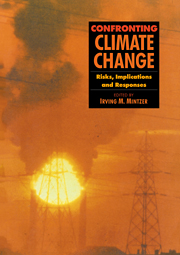Book contents
- Frontmatter
- Contents
- Foreword
- Acknowledgements
- List of Reviewers
- 1 Living in a Warming World
- I The Science of Climate Change
- II Impacts of Global Climate Change
- III Energy Use and Technology
- IV Economics and the Role of Institutions
- V Equity Considerations and Future Negotiations
- Annex I
- Annex II
- Glossary
- Index
1 - Living in a Warming World
Published online by Cambridge University Press: 06 January 2010
- Frontmatter
- Contents
- Foreword
- Acknowledgements
- List of Reviewers
- 1 Living in a Warming World
- I The Science of Climate Change
- II Impacts of Global Climate Change
- III Energy Use and Technology
- IV Economics and the Role of Institutions
- V Equity Considerations and Future Negotiations
- Annex I
- Annex II
- Glossary
- Index
Summary
Human activities are changing the composition of our atmosphere at an unprecedented rate. If current trends continue, our planet could face a climatic shock unlike anything experienced in the last 10,000 years. It would not be felt as an immediate blow, that is a shift from status quo to catastrophe. The climate cannot disappear like an endangered species. Nor can it explode like a runaway reactor. Nevertheless, the risks of rapid climate change — rapid by geologic and climatic standards — are rising rapidly in our time. In this context, “shock” is an appropriate term. It describes the impact that the resulting set of changes may have on human economies and natural ecosystems.
Climate change is not a new phenomenon. Earth's climate has changed before, many times in the last two billion years. But something important is different this time.
A Change is in the Air
The woman gathering fuelwood in the Sudan senses a difference. She survived 2 extremely dry years and then, in August 1988, saw a year's rain fall in three days. The British coal miner suspects that something is askew in the picture outside his kitchen window. He was shocked as he saw the “100-year storm” blow across Britain twice in 5 years, tearing up trees that he had regarded as a permanent feature of the landscape. The American, Australian, and African farmers who have seen deep droughts and big rains crush their crops again and again in the last 5 years, can feel a difference in the soil and smell a difference in the air.
- Type
- Chapter
- Information
- Confronting Climate ChangeRisks, Implications and Responses, pp. 1 - 14Publisher: Cambridge University PressPrint publication year: 1992
- 2
- Cited by

